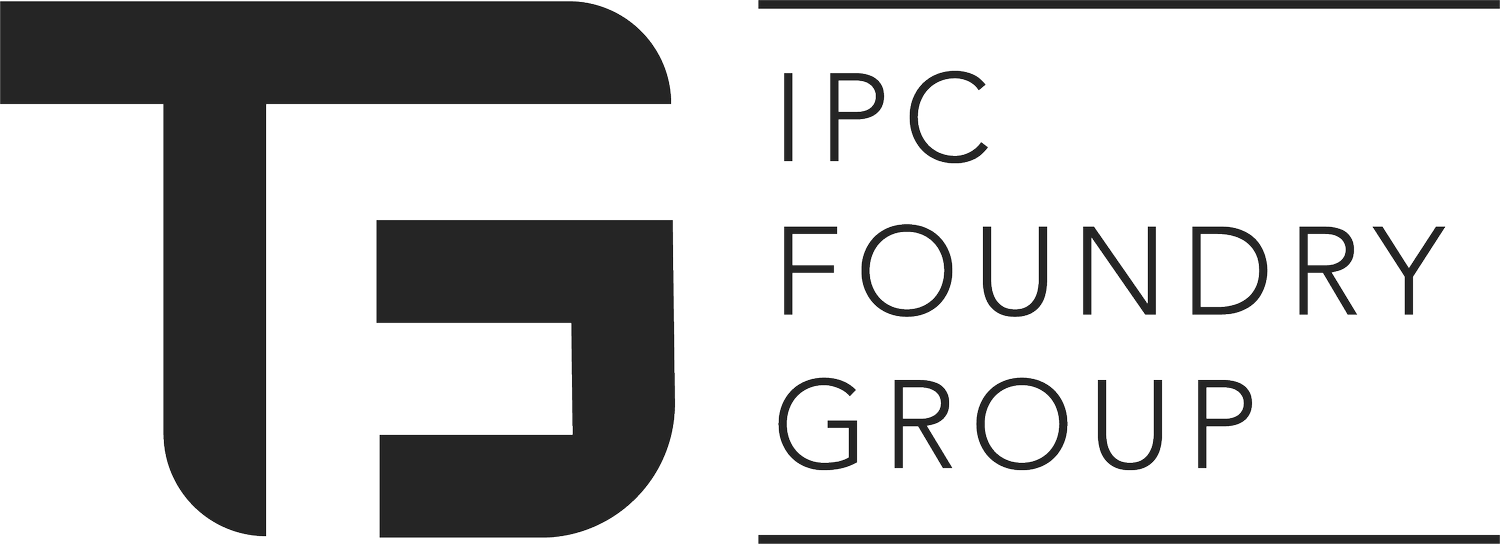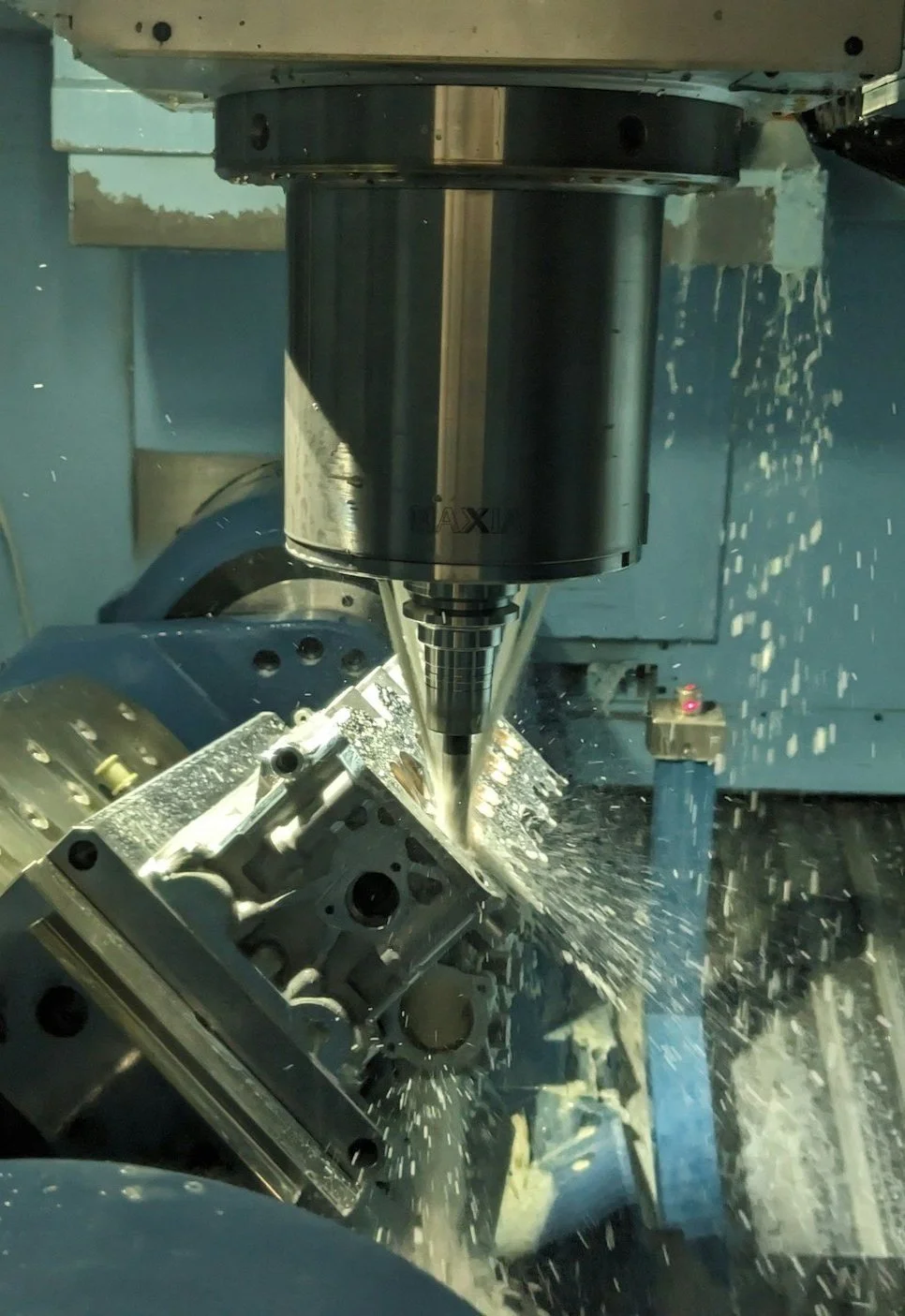What is Machined Casting?
A machined part with a beautiful, smooth surface finish.
Casting and machining are commonly used metal forming methods, often considered standalone disciplines. In today's blog, we'll explore machined castings - parts produced with a combination of machining and casting that leverages the benefits of each production method, sidesteps many of their limitations, and can provide significant cost savings to a company's production cycle.
Before we get into this hybrid option, let’s take a quick look at machining and casting.
A Quick Look at Machining and Casting
What is Casting?
Metal casting forms a component by utilizing dies or molds to create a blueprint for the future metal part. For example, think of a plastic ice tray + water to create ice cubes or muffin tin + batter to make muffins.
With a mold in place, molten metal is poured into the shape, and as it cools, a solid metal part remains. Casting has been utilized in one form or another for ~5,000 years in creating tools, weapons, art, and more.
What is Machining?
Machining utilizes cutting tools (manual or automated) to cut away from a chosen material to leave behind the desired shape/component. As a comparative example, think of a whittler or woodworker using a knife to shave away pieces of a wooden block or, in the spirit of Halloween, using knives and small saws to form a pumpkin into a jack-o-lantern.
Machining also has a rich history, with early files, lathes, and other cutting tools utilized as early as 1200 BCE. Modern-day automated CNC machines allow precise and complex shapes to be purpose-built consistently.
A foundry worker utilizes a ceramic mold to form a cast part.
A CNC machine cutting a metal component.
Pros and Cons of Casting & Machining
This is a big topic we’ll tackle in an upcoming blog, but simply put, machining is ideal for producing complex geometry in small and medium volumes or when very tight tolerances are needed. It is also an excellent choice for prototyping, as you can quickly get multiple iterations of parts.
Casting is the ideal choice when producing large volumes of identical parts, as the cost savings over time are unmatched by other metal forming methods. Opting for investment casting also allows for very complex shapes and great surface finishes, albeit less precise than machining.
Here are a few more basic pros and cons of each method.
Casting:
Pros:
1) Repeatability: By using molds, casting allows for exceptional repeatability and consistency in producing and re-producing components. Investment casting is often the go-to method for creating parts en masse.
2) Cost Savings in Bulk: Because of its repeatability, investment casting offers significant cost savings per part during medium—and large-scale production cycles.
3) Large Parts & Unique Geometry: Casting allows for producing large parts consistently as well as pouring parts with unique geometry (overhangs, thin walls, holes, and cavities).
4) Less Waste/Recycled Excess: Casting produces very little waste as excess metal lost in pouring can typically be gathered and recycled in-house. Furthermore, in investment casting, nearly 100% of wax used in mold making can be recycled or repurposed for future production runs.
5) Faster in Bulk: Casting can be significantly faster than other metal forming methods when producing a large volume of parts, especially in multiple production runs when tooling is finished. Investment casting typically uses gate systems and trees, allowing multiple parts to be cast in one go.
Cons:
1) Upfront Tooling Costs and Time Loss: In Investment Casting, preparing molds for pouring can be expensive and require more time than machining. However, these costs can diminish when producing in bulk.
2) Gate Removal and other Surface Finishing: Whether using sand casting or investment casting, surface finishes are typically worse than what can be achieved through machining.
3) Machining allows for more complex shapes and tighter tolerances: Machining is the go-to method for producing parts with complex geometry. Investment/precision casting can offer very complex parts and unique geometry, but Machining is king for producing complex shapes.
Machining:
Pros:
1) Very Complex Geometry: Whether producing holes, threading, overhangs, thin walls, silky smooth surface finishes, and beyond, machining is the go-to method for forming complex geometry in metal components or when you require the tightest tolerances.
2) Quick Turnaround: With a 3D model in hand, parts can be produced very quickly with very little setup time compared to investment casting.
3) Wide Material Selection: You can use nearly any material in machining as long as the tool head is strong enough to cut it. This gives product engineers a lot of leeway when opting for machining.
4) Cost Savings in Small-Medium Production Runs: When producing a small volume of parts, machining will often provide cost savings when compared to casting which requires tooling and mold setup.
5) Prototyping Friendly: Send over multiple 3D models and have multiple prototypes in hand fast. Machining is a great metal-forming method for prototyping and internal testing.
Cons:
1) Less cost-effective in bulk: Investment casting is often a more cost-effective option when producing many identical parts (especially when considering multiple production cycles).
2) More Waste: Machining produces more waste than its casting counterparts and the recycling process is more involved.
3) Size Restrictions: When machining, you are limited to the build volume/cutting volume of your CNC machine. Methods like sand casting can be better suited to forming very large parts.
Why Not Do Both?
Throughout your reading, you may have asked, “Why not do both”? The most straightforward answer is that casting and machining are complex processes that require trained staff, specialized equipment, and a steady supply of manufacturing challenges that fit their niche. Often, casting and machining operate independently because it takes a unique part to utilize both methods efficiently.
To use both methods effectively, you need to produce enough parts to make casting worth it and have a part complex enough to require machining. When both conditions are met, a machined casting can be a slam dunk option for your production cycle.
Opting to cast a part’s primary geometry first and provide the fine detail and finishing touches through machining can provide significant cost savings in bulk production runs, eliminate a significant amount of material waste, and produce parts with exceptionally tight tolerances and complex geometry.
How Machined Casting Works
Before any casting or machining begins, engineers will work with your part to prepare it for the casting process and secondary machining. This would include tooling and optimizing production to ensure that your part is produced as quickly and efficiently as possible while meeting all of the project’s tolerances and design demands.
Machined Casting would utilize the casting process first to form a part’s primary geometry and, in some instances, provide geometry that is difficult or impossible to obtain through machining (such as internal cavitation). Utilizing investment casting would allow a production team to produce your part en masse for current and future production runs.
After the casting process, your part will be ready for secondary machining operations such as adding threading, creating a smoother surface finish, or introducing more complex geometry that is unachievable through casting alone. Because so much of the primary geometry is already cast, machining will be faster and contain less waste than cutting a part out of a raw material block.
When these disciplines are combined, you can get the best of both worlds: extremely cost-effective, bulk production with complex shapes and beautiful surface finishes.
Create highly detailed, easily repeatable parts with machined casting.
Cut Your Machining Costs with IPC
Interested in machined castings? The IPC Foundry Group has over 45 years of investment casting experience, and our team of engineers can work with you to prepare machined castings with our domestic foundries or international partner foundries, saving you time & money while providing exceptionally cast metal parts.
Contact our team today to see how you can dramatically cut your machining costs with IPC!.
DisclaimerThis blog is intended to provide a quick look at machined castings, and we make no claim to the fullness or completeness of the content above. If you have questions about casting, machining, or the hybrid world of machined castings, we recommend doing significant research and contacting our team of experts to discuss the particular nuances of your metalworking project.




